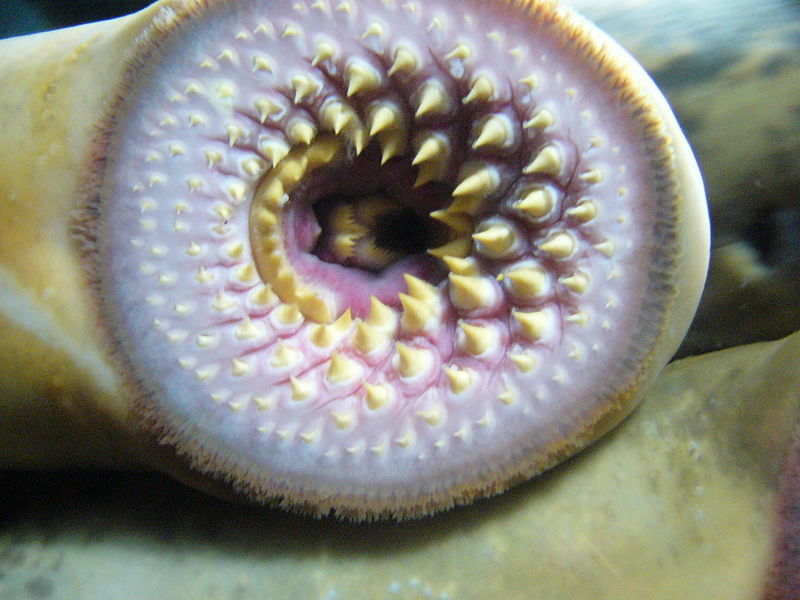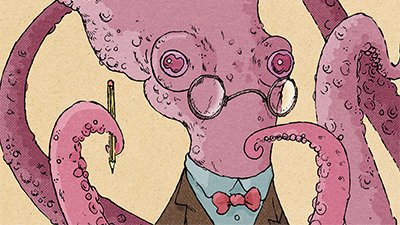Vampires of the Animal Kingdom
Long before the 1819 publication of The Vampyre by John Polidori, and before Bram Stoker popularized vampires with the novel Dracula in 1897, humans have been spinning tales of creatures which drink blood. Some tales were of mythological beings, some perhaps based on real people who engaged in cannibalism and blood drinking, and many are based on real animals or embellishments of real animals. Mythological creatures such as pishachas, ghouls, estries, kappas, and striges are just a few examples out of many hundreds. Even as recently as 1995, new blood-drinking creatures have been reported and entered into the pages of cryptozoology, such as the chupacabra.
Real-life creatures such as vampire bats, leeches, ticks, lampreys, bedbugs, and mosquitos not only exist and are constant pests and threats to humans, livestock, and aquaculture; but they are also feared because of the threat of disease, such as rabies, Lyme disease, malaria, and other bacterial and virulent agents. In addition to the physical threats though, there is also the psychological fear that they induce. Who could sleep soundly in a place that is infested with bedbugs? Who could swim in a pond known to have leeches and not be a little trepidatious? Even well-known and lesser-feared pests like mosquitos constantly keep concerns of West Nile virus or malaria in the back of our minds.
The vampire bat, for example, is probably the first animal that people would think of if asked for a list of blood-drinking animals. The three species of vampire bats are all confined to South America. Two of the three species (the hairy-legged vampire bat and the white-winged vampire bat) feed mainly on birds, while the common vampire bat feeds on almost any available mammal and sometimes the occasional reptile. Therefore, it is only this last species that is a threat to humans, and usually less than 0.5% of bats carry rabies. But the psychological fear that vampire bats instill, far outweighs their threat to humans.

Lamprey mouth. Fernando Losada Rodríguez, CC BY-SA 4.0, via Wikimedia Commons.
Lampreys are the “vampires” of rivers, lakes, and even the temperate oceans. Of the 38 species though, only 18 are parasitic. They are jawless, cartilaginous fish that feed on the blood and/or body tissues of other fish, river and sea mammals, and occasionally humans. Their mouth resembles a rasp saw and is the stuff of nightmares.
Vampire finches and some oxpeckers have been observed to become sanguinivorous (blood-drinking) in the last 150–200 years.1 Vampire finches were thought to have been insectivorous, removing ticks and other parasites from animals, and gradually becoming opportunistic blood-drinkers.2 They also are observed to eat eggs, seeds, and still occasionally feed on parasitic insects.3 Oxpeckers are still insectivorous and also feed on dead skin and earwax, but some have adapted to drinking blood from their hosts in addition to eating parasites.4 After the fall, these animals probably became insectivores and then gradually started incorporating blood into their diet opportunistically and, in some cases, deliberately. Other oxpeckers, though, still seem to be strictly insectivorous and only clean their hosts, not feed off them.5

Bedbug bites. James Heilman, MD, CC BY-SA 3.0, via Wikimedia Commons.
Perhaps the most feared from a human standpoint (at least for their creep-out factor) of all of these creatures is the common bedbug (Cimex lectularius). These parasitic insects feed preferentially on human blood (although they have also been found to feed on house pets) and have been pests for millennia. In many developed countries, they were almost wiped out in the 1930s and 1940s, but recently they have been making a comeback. Many researchers think this is due to pesticide resistance. Symptoms of bedbug attacks often include itchy red welts on the skin and, for some patients, mild to severe allergic reactions triggered by the insects’ saliva. Because the bites drain some of the victim’s blood, prolonged exposure can in rare cases (especially in a highly-infested home) lead to anemia.
At Answers in Genesis, we are often asked questions about why God would create some of these creatures; isn’t God supposed to be good? But the fact is that God created all things, including all animals, good. God gave all creatures vegetation to eat, and there was no death and bloodshed. In Genesis 1:31, at the end of day six God looked over the entirety of creation and pronounced it “very good.” In God’s original creation, all of the above creatures were not blood-feeders, but instead ate plants, water plants, and possibly pollen or nectar,6 as indeed vampire finches sometimes still do.7 Due to mankind’s rebellion and sin, this idyllic condition did not last, as all of creation was placed under the curse. Sometime after the fall, these animals became omnivorous, carnivorous, parasitic, and/or insectivorous, and then gradually started incorporating blood into their diet opportunistically, and in some cases became obligate sanguinivores. It is therefore illogical to look at this fallen world’s creatures and try to make a judgment on God’s character, as so many atheists and agnostics have done. The truly spooky thing about these bloodsuckers is that mankind is responsible for their being here.
Footnotes
- Darren Naish, “Oxpeckers: Poor at Tick Control, Great at Keeping Your Wounds Open,” Tetrapod Zoology (blog), Science Blogs, January 25, 2007, http://scienceblogs.com/tetrapodzoology/2007/01/25/more-on-the-evolution-of-vampi/.
- Gordon Ramel, “Vampire Finch aka Sharp-beaked Finch, Sharp-billed Ground Finch,” Earth Life, July 11, 2023, https://earthlife.net/vampire-finches.
- “The Vampire Finch,” Galapagos Islands News, October 25, 2012, http://www.galapagosislands.com/newsletter/archive/galapagos_vampire-finch.html.
- Paul Weeks, “Red-billed Oxpeckers: Vampires or Tickbirds?” Behavioral Ecology 11, no. 2 (2000): 154–160, 10.1093/beheco/11.2.154.
- Charles L. Nunn et al., “Mutualism or Parasitism? Using a Phylogenetic Approach to Characterize the Oxpecker-Ungulate Relationship,” Evolution 65, no. 5 (2011): http://dash.harvard.edu/bitstream/handle/1/5344481/Oxpeckers_Evol%20revised2.pdf?sequence=1.
- Some creation biologists leave open the possibility of insectivorous diets pre-fall. For more information, see John Woodmorappe, “The Dracula Connection to a Young Earth,” Answers in Genesis, December 1, 1998, https://answersingenesis.org/mammals/the-dracula-connection-to-a-young-earth/.
- “Sharp-beaked Ground-finch Fact File,” Wildscreen Arkive, accessed October 15, 2014, http://www.arkive.org/sharp-beaked-ground-finch/geospiza-difficilis/.
Recommended Resources

Answers in Genesis is an apologetics ministry, dedicated to helping Christians defend their faith and proclaim the good news of Jesus Christ.
- Customer Service 800.778.3390
- © 2024 Answers in Genesis





